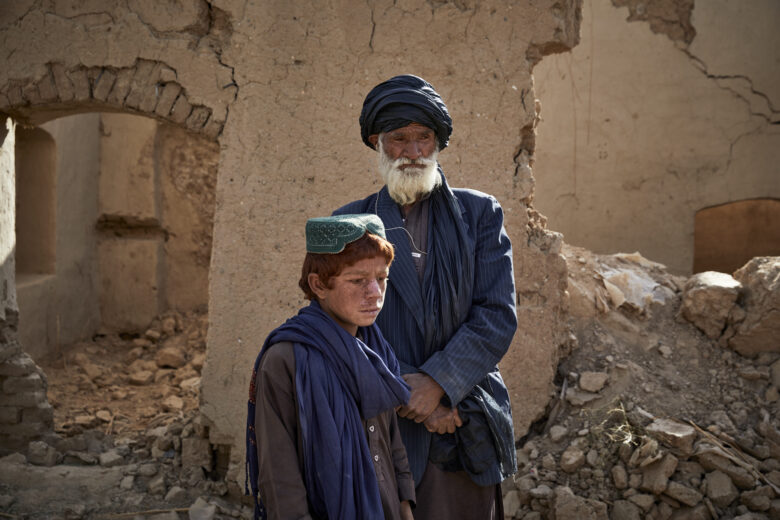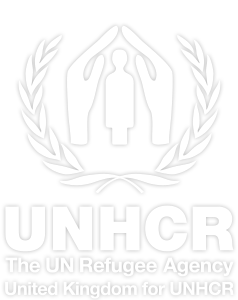Media release
Global Trends 2021: a year of record displacement, capping decade-long rising trend

Sayed Mohammad*, 70, and his son Adbul Wadood*, 13, stand in their damaged home in Marja in southern Afghanistan’s Helmand Province. Photo: © UNHCR/Andrew McConnell
16.06.22 – The number of people forced to flee their homes has increased every year over the past decade and stands at the highest level since records began, a trend that can be only reversed by a new, concerted push towards peacemaking, UNHCR, the UN Refugee Agency, said today.
According to UNHCR’s annual Global Trends report, released today, by the end of 2021, those displaced by war, violence, persecution, and human rights abuses stood at 89.3 million, up 8 per cent on a year earlier and well over double the figure of 10 years ago.
Since then, the Russian invasion of Ukraine – causing the fastest and one of the largest forced displacement crises since World War II – and other emergencies, from Africa to Afghanistan and beyond, pushed the figure over the dramatic milestone of 100 million.
United Nations High Commissioner for Refugees, Filippo Grandi said:
“Every year of the last decade, the numbers have climbed. Either the international community comes together to take action to address this human tragedy, resolve conflicts and find lasting solutions, or this terrible trend will continue.”
Last year was notable for the number of conflicts that escalated and new ones that flared; 23 countries, with a combined population of 850 million, faced medium- or high-intensity conflicts, according to the World Bank.
Meanwhile, food scarcity, inflation and the climate crisis are adding to people’s hardship, stretching the humanitarian response just as the funding outlook in many situations appears bleak. The number of refugees rose in 2021 to 27.1 million. Arrivals climbed in Uganda, Chad and Sudan among others.
Most refugees were, once again, hosted by neighbouring countries with few resources. The number of asylum seekers reached 4.6 million, up 11 per cent.
UNHCR’s UK Representative Vicky Tennant noted that the overwhelming majority of people forcibly displaced remained either within their own countries or are hosted in ones nearby. “Millions of lives have been saved through the generosity of those countries neighbouring crisis zones, who have sustained access to asylum in the face of huge challenges. But countries further away must also step up and play their part – through international aid, resettlement and other pathways to safety, and by ensuring that their own borders stay open to those seeking asylum.”
She paid tribute to the warm welcome provided by many communities and families refugees arriving in Britain during the past year, especially from Afghanistan and Ukraine “They have opened their doors to refugees and shown that a proud tradition of sanctuary and welcome continues in Britain today,” she said.
“That same solidarity and compassion must also be extended to people fleeing war and persecution anywhere in the world, regardless of their nationality or how they arrive,” said Tennant.
Emma Cherniavsky, CEO of UNHCR’s British national charity partner, UK for UNHCR, added her thanks to the British public and the private sector for contributing £8.8 million of donations directly supporting UNHCR relief efforts around the world in 2021.
“With global displacement at record highs, solidarity from the British public and private sector partners in support of refugees has never been so vital. We are hugely grateful for their generosity in helping ensure UNHCR’s relief programmes around the world can continue.”
Last year also saw the 15th straight annual rise in people displaced within their countries by conflict, to 53.2 million. The increase was driven by mounting violence or conflict in some places, for example Myanmar. The conflict in Ethiopia’s Tigray and other regions has spurred the flight of millions within the country. Insurgencies in the Sahel drove fresh internal displacement, particularly in Burkina Faso and Chad.
The speed and volume of displacement is still outpacing the availability of solutions for those displaced – like return, resettlement or local integration.
Yet the Global Trends report also contained glimmers of hope. The number of refugee and IDP returns increased in 2021, returning to pre-COVID-19 levels, with voluntary repatriation having surged 71 per cent, though numbers remained modest.
“While we’re witnessing appalling new refugee situations, and existing ones reigniting or remaining unresolved, there are also examples of countries and communities working together to pursue solutions for the displaced,” Grandi added. “It’s happening in places – for example the regional cooperation to repatriate Ivorians – but these important decisions need to be replicated or scaled up elsewhere.”
And although the estimated number of stateless people grew slightly in 2021, some 81,200 acquired citizenship or had it confirmed – the biggest reduction in statelessness since the start of UNHCR’s IBelong campaign in 2014.
ENDS
UNHCR 2021 Global Trends Report – key data:
- By May 2022, more than 100 million people were forcibly displaced worldwide by persecution, conflict, violence, human rights violations or events seriously disturbing public order.
- At end 2021, the figure was 89.3 million, comprising:
- 27.1 million refugees
- 21.3 million refugees under UNHCR’s mandate
- 5.8 million Palestine refugees under UNRWA’s mandate
- 53.2 million internally displaced people
- 4.6 million asylum seekers
- 4.4million Venezuelans displaced abroad
Among refugees and Venezuelans displaced abroad in 2021:
- Low- and middle-income countries hosted 83 per cent o Least Developed Countries provided asylum to 27 per cent of the total.
- 72 per cent lived in countries neighbouring their countries of origin.
- Türkiye hosted nearly 3.8 million refugees, the largest population worldwide, followed by Uganda (1.5 million), Pakistan (1.5 million) and Germany (1.3 million). Colombia hosted 1.8 million Venezuelans displaced abroad.
- Lebanon hosted the largest number of refugees per capita (1 in 8), followed by Jordan (1 in 14) and Türkiye (1 in 23). Relative to their national populations, the island of Aruba hosted the largest number of Venezuelans displaced abroad (1 in 6) followed by Curaçao (1 in 10).
- More than two thirds (69 per cent) came from just five countries: Syria (6.8 million), Venezuela (4.6 million),[6] Afghanistan (2.7 million), South Sudan (2.4 million) and Myanmar (1.2 million).
- Globally, there were 6.1 million Venezuelan refugees, asylum seekers and migrants in 2021 (reported through the Coordination Platform for Refugees and Migrants from Venezuela).
- Asylum seekers submitted 1.4 million new claims. The United States of America was the world’s largest recipient of new individual applications (188,900), followed by Germany (148,200), Mexico (132,700), Costa Rica (108,500) and France (90,200).
Solutions:
- 5.7 million displaced people returned to their areas or countries of origin in 2021, including 5.3 million internally displaced people and 429,300 refugees.
For more information on this topic, please contact our Media team.
To access UNHCR’s Global Trends 2021 report, please visit this website.

